When it comes to flagship smartphones, let's be honest, Asus doesn't immediately come to mind. The smartphone manufacturer, although it has always shown great solidity with its Android terminals, seems to lag behind in user preferences, which first turn the mind to other brands. Still, Asus Zenfone 7 Pro is a powerhouse, one of a kind due to the flip-up camera. Here's what we think.
Let's start immediately with the feeling you get as soon as you open the package and pick up this Zenfone 7 Pro. Heavy, extremely heavy. Yeah, so we got our teeth out right away, as they say. Because the weight seems to be one of the few flaws of the terminal. If you decide to live with this “burden”, then this new Asus really has many positive arrows in its bow. It weighs 230 grams and has a not too low thickness of 9.6 mm.
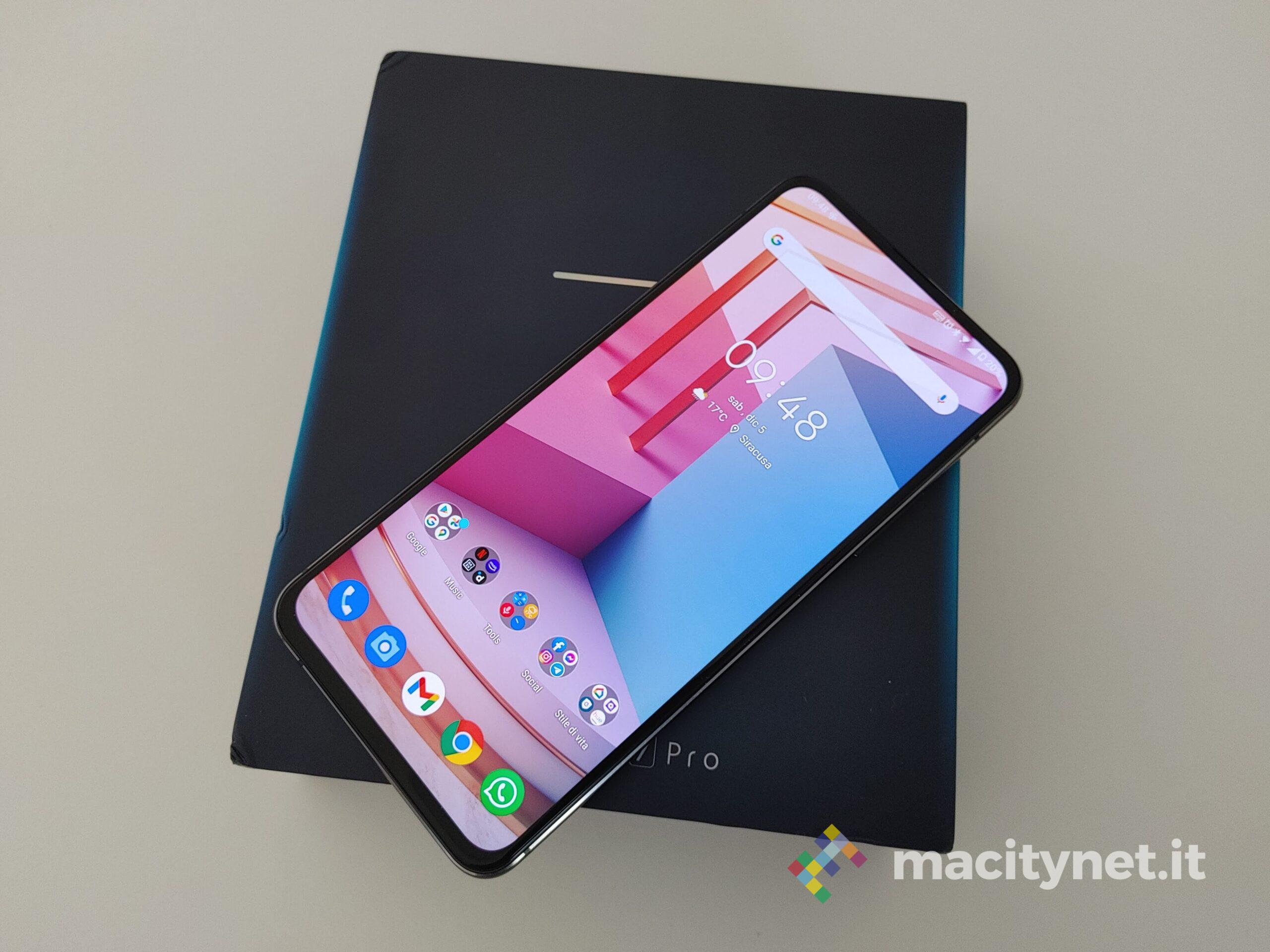
In terms of design Zenfone 7 Pro relies on a double glass, and what certainly stands out is the “absence” of a front camera. Yes, because it is the imposing rear chamber which, if necessary, rotates on a pivot and acts as the front chamber. The rotation mechanism thus makes it possible to have no notches or holes on the display, in addition to enjoying a selfie camera that is identical in quality to the rear one. The company says the spin engine allows up to 200,000 flips, up from 100,000 on last year's model.
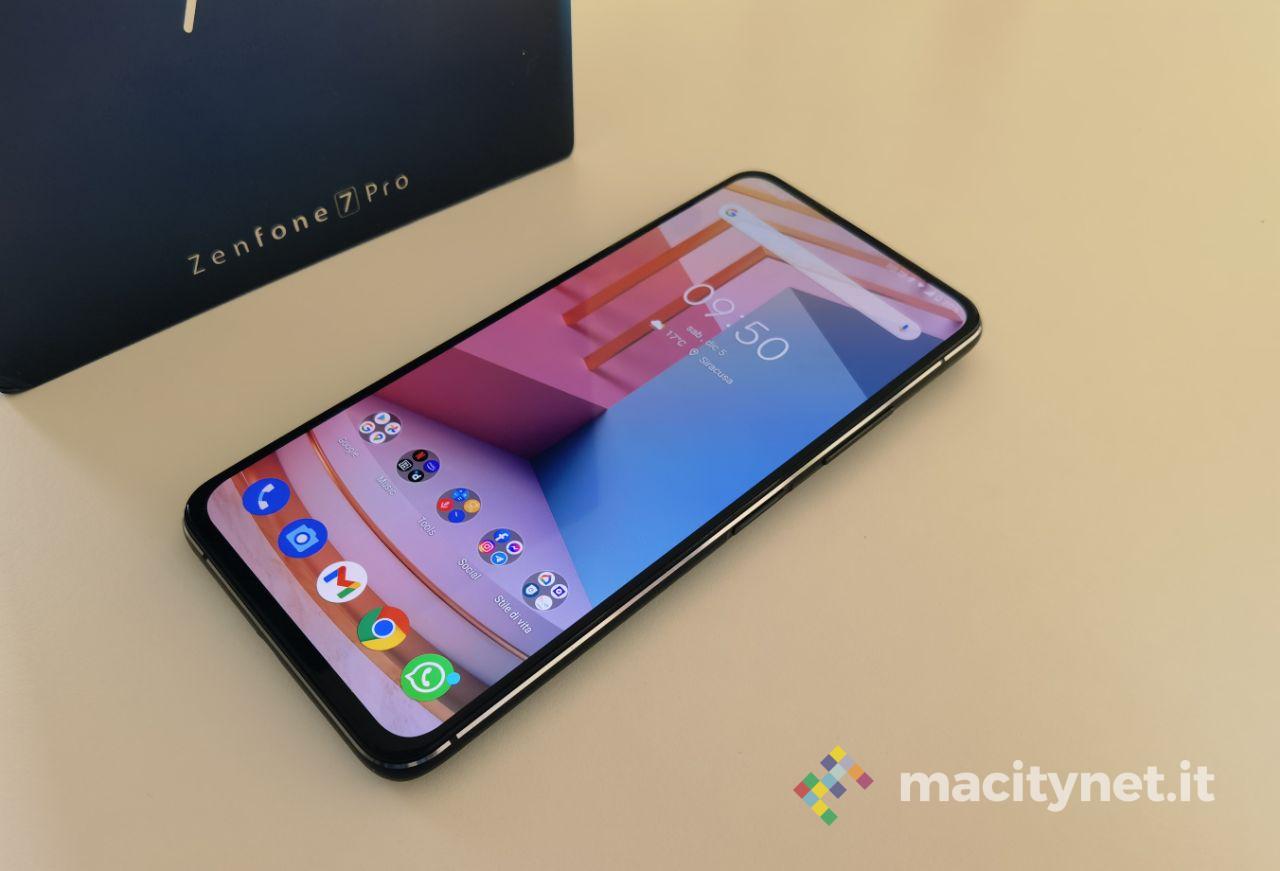
We have mentioned the advantages of such a mechanism: immense and uninterrupted display, quality of the front chamber identical to that of the rear module. The cons are not too many, even if such a mechanism actually makes it difficult to think of the Fave Unlock as the main method for unlocking. In this, however, the software helps: by activating the unlock with the face, in fact, when the terminal is turned on, the rotation of the camera will not always correspond, which instead can be recalled with a swipe on the screen turned on in the unlock screen. It must be said that during our tests we decided to completely disable the unlocking with the face, because in taking the smartphone from the pocket, a couple of times we inadvertently started the rotation of the camera, when the device was still in the pocket of the jeans.
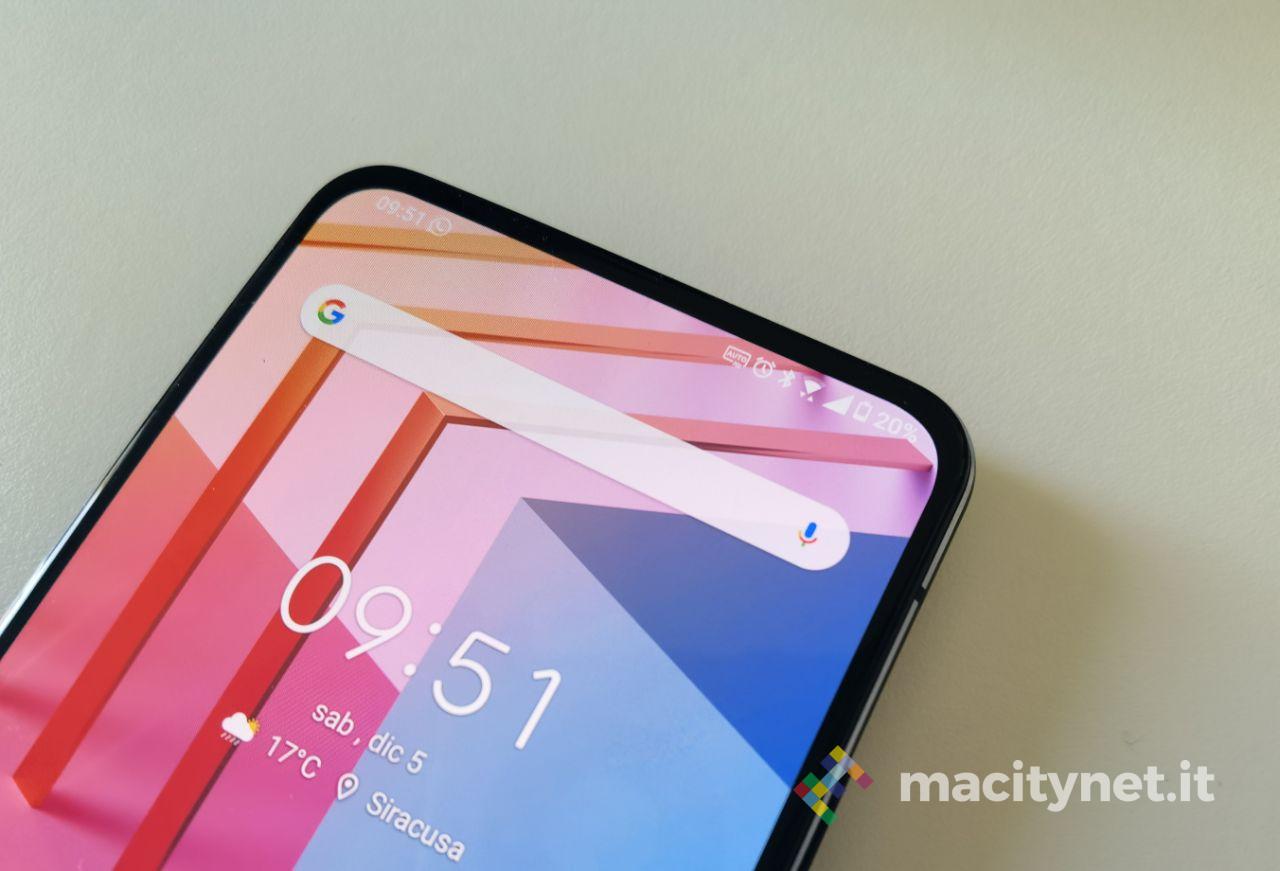
At the front is the large display, surrounded by some large bezels and an ear speaker nestled between the glass and the metal frame. It is a 6.67-inch AMOLED unit with 90Hz refresh rate, 2,340 x 1,080 resolution, 19.5: 9 aspect ratio and HDR10 + support.
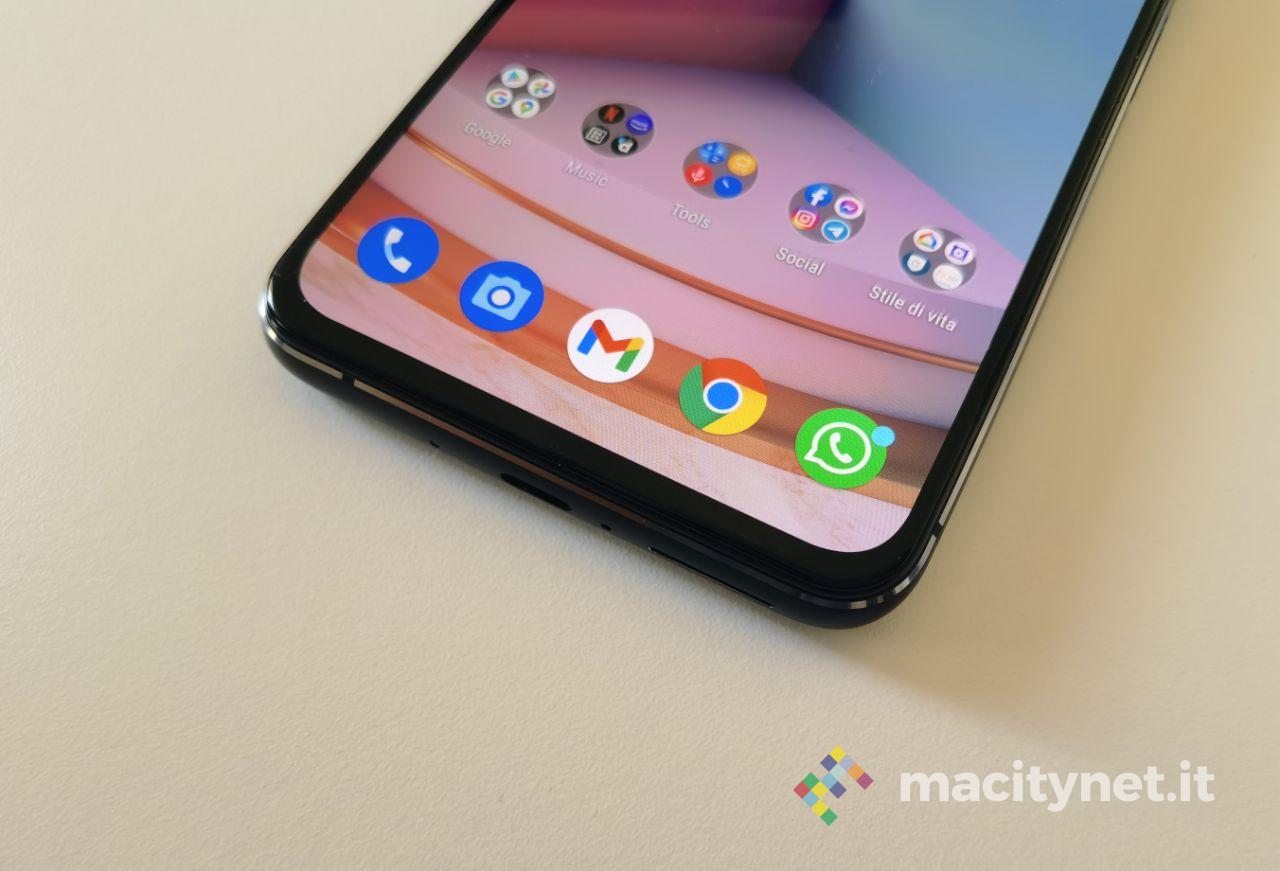
On the left, the dual-SIM compartment with microSD support. The volume rocker and power button / fingerprint scanner are located on the right. On the top edge is the camera mechanism, while the USB-C port, speaker, microphone, and notification LED are located at the bottom. This is also a novelty compared to the competition: the notification LED is on the lower edge, and allows you to notice lost notifications when, for example, the terminal is placed on the desk while working on the PC.
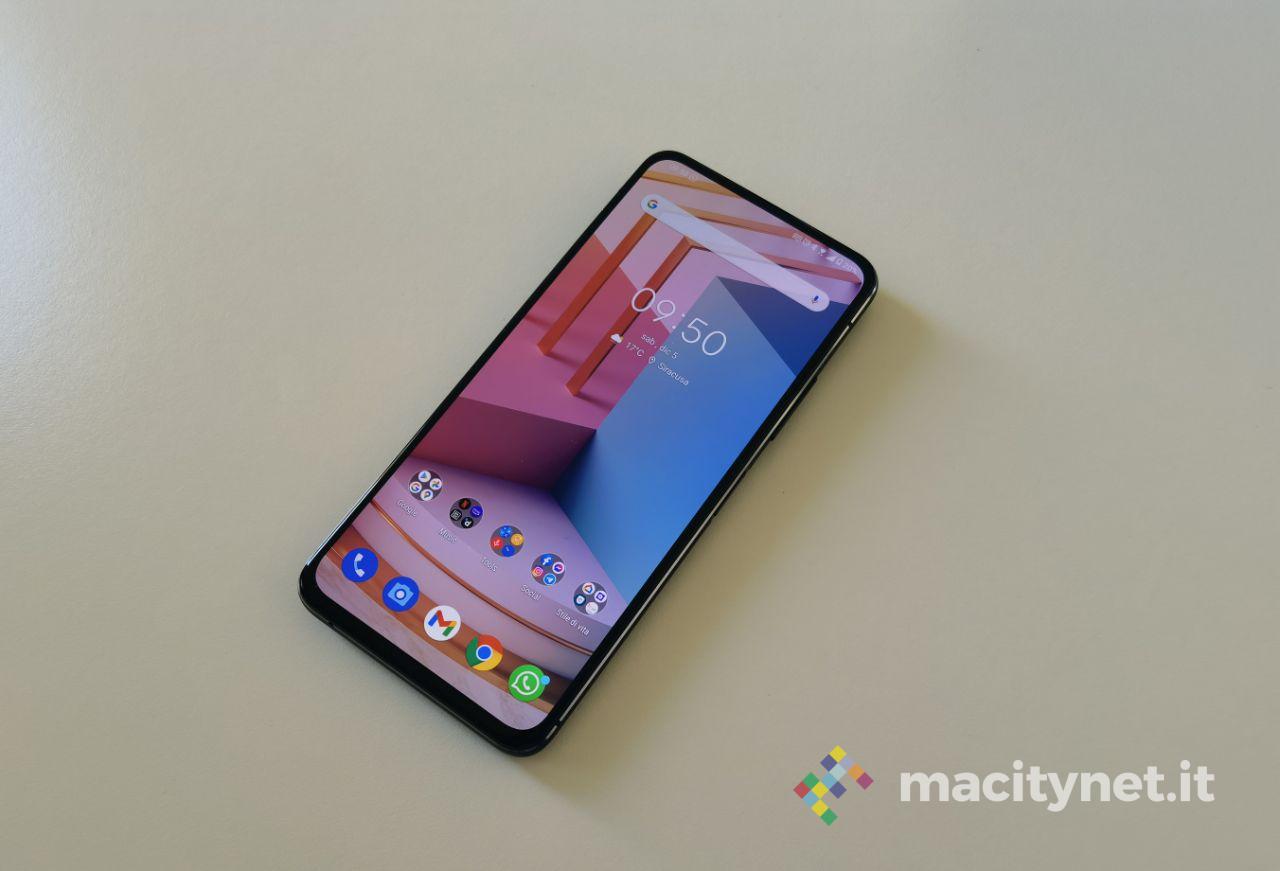
The fingerprint scanner embedded in the side physical button is very fast and precise, and this makes the use of the Face Unlock superfluous. Overall, Zenfone 7 Pro still delivers a premium feel to the touch, even if the idea of a camera rotation mechanism leads the user to always think that they are holding a delicate phone.
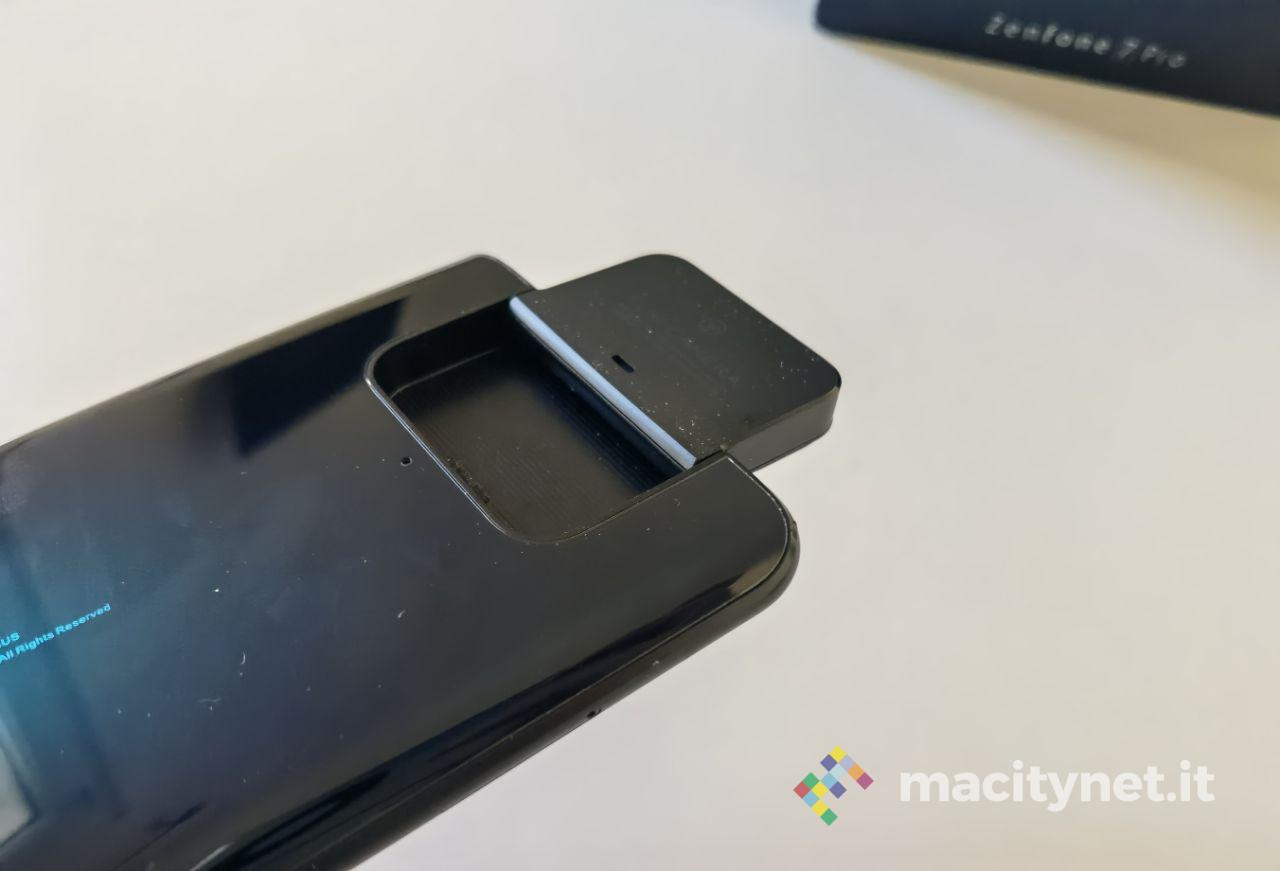
Returning to the panel, it is true that the Zenfone 7 Pro price list would have suggested a higher resolution, as well as a refresh rate of 120 Hz, but overall it feels like a quality screen, which certainly does not exist in everyday life. will absolutely regret screens from other brands. After all, 90Hz seems to be the right compromise between excellent fluidity, and a right weight on the battery.
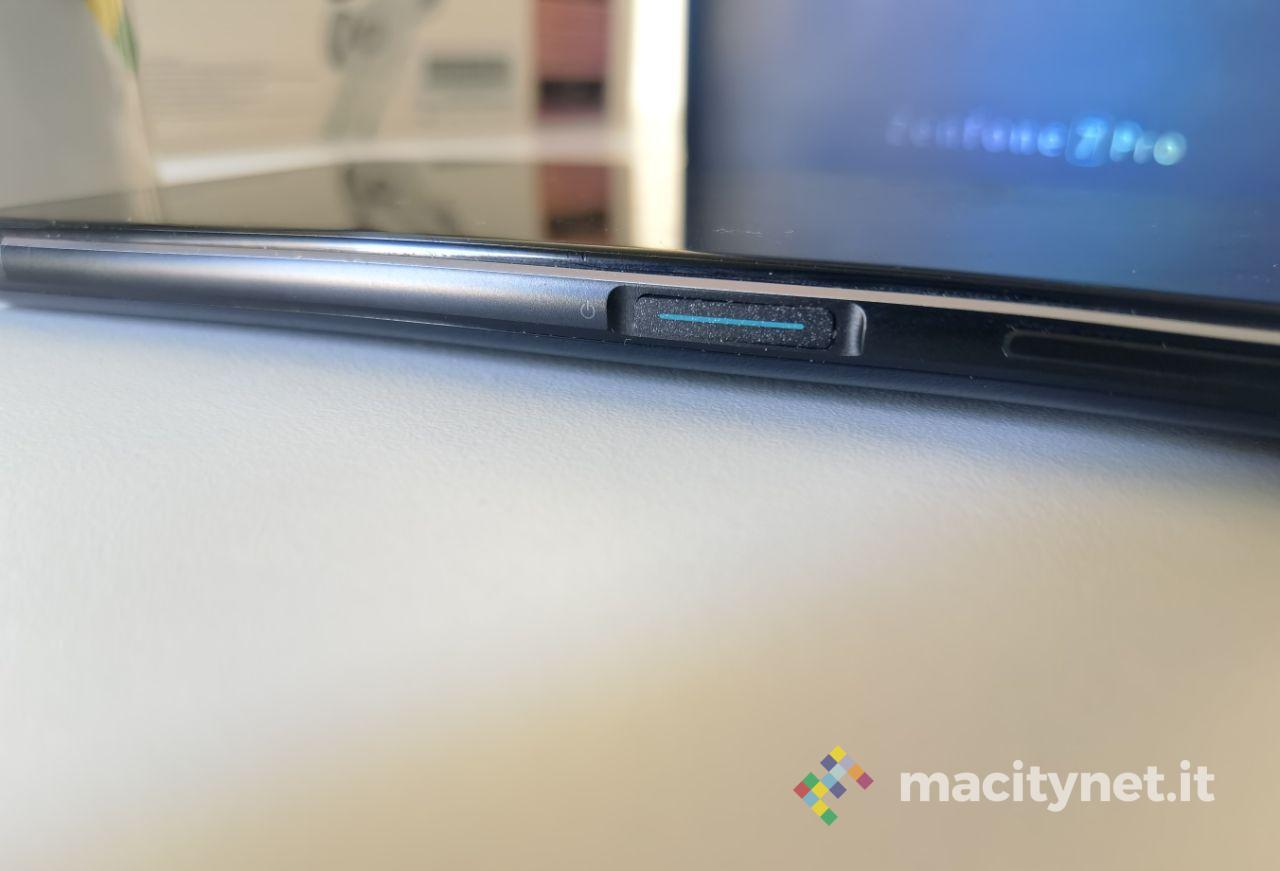
The panel also stands out in brightness, as it peaks at over 490 nits. It should be noted, however, that the shades tend to be cold. For the writer it is a “pro”, not loving warm tones, but objectively it is a color calibration that could make many turn up their noses.
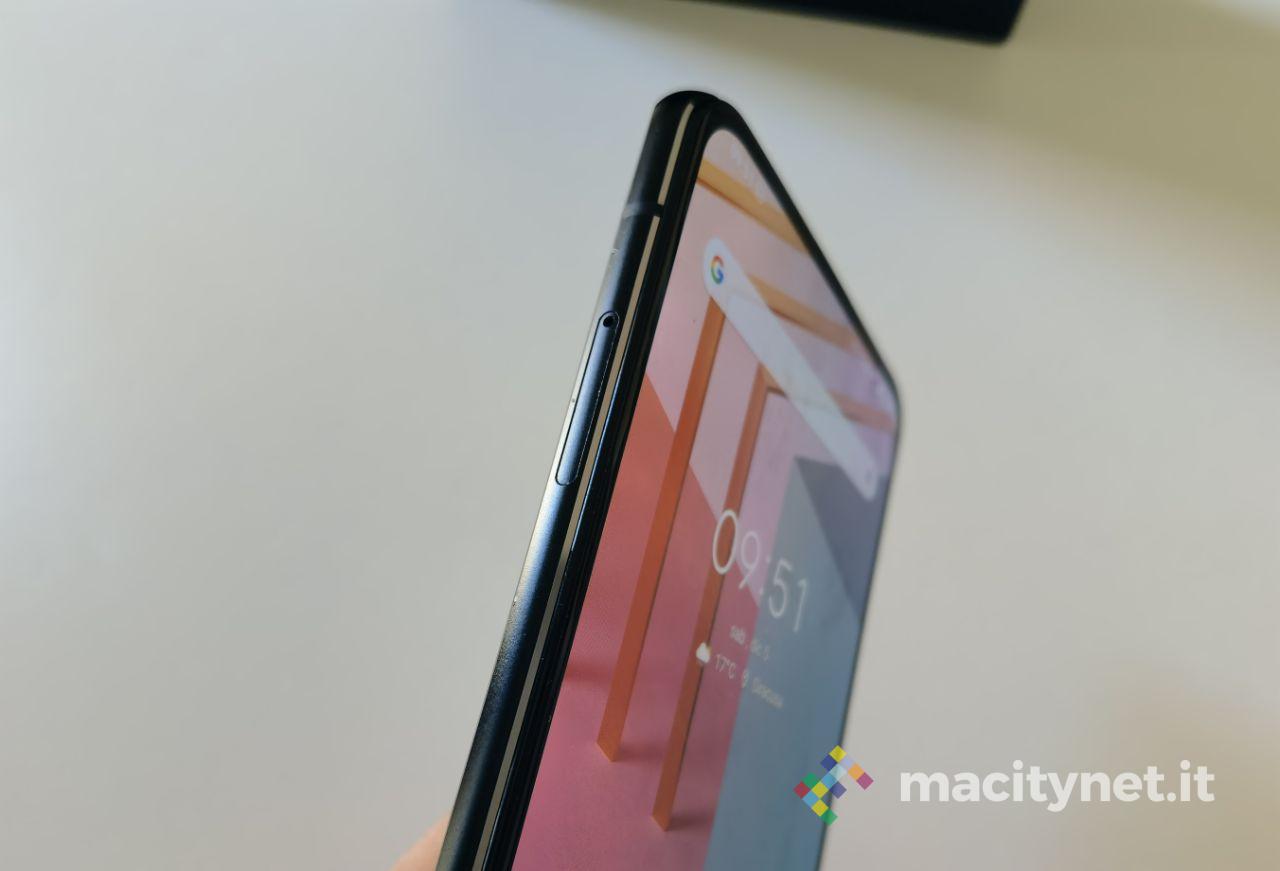
As for technical characteristics, Asus Zenfone 7 Pro is simply the top. It mounts the Qualcomm Snapdragon 865 Plus processor, Adreno 650 GPU, 8 GB of RAM, 256 GB of UFS 3.1 storage memory, while on the software side it houses the excellent ZenUI 7, based on Android 10. Needless to say, the responsiveness in use daily is stellar. It is true that often between the different processors, even of a smaller scale, there is no particular difference, but using this 7 Pro is really a pleasure: never a lag, never a slowdown, never an uncertainty.
It is among the smartphones of the end of 2020 one of the most reactive, without a doubt. Moreover, the cooling system deserves praise: not only is it among the most fluid on the market at the moment, but it is also the one that heats less. We noticed a slight increase in the rear temperature only by stressing the photographic module, but nothing transcendental.
Camera
But let's move on to the photographic department, which actually represents the distinctive note of this terminal. The module, unique considering that it is the same for the front and rear, has a main sensor of 64MP, f / 1.8, with a size of 1 / 1.7 inches and OIS. Flanked by an ultra-wide sensor from 12MP, f / 2.2, FOV at 113 degrees and a telephoto lens with 3x optical zoom of 8 MP, f / 2.4, OIS. It is capable of recording 8K video at 30fps, 4K at 60fps and Full HD at 60fps. It also benefits from 4K 120 fps slow motion function.
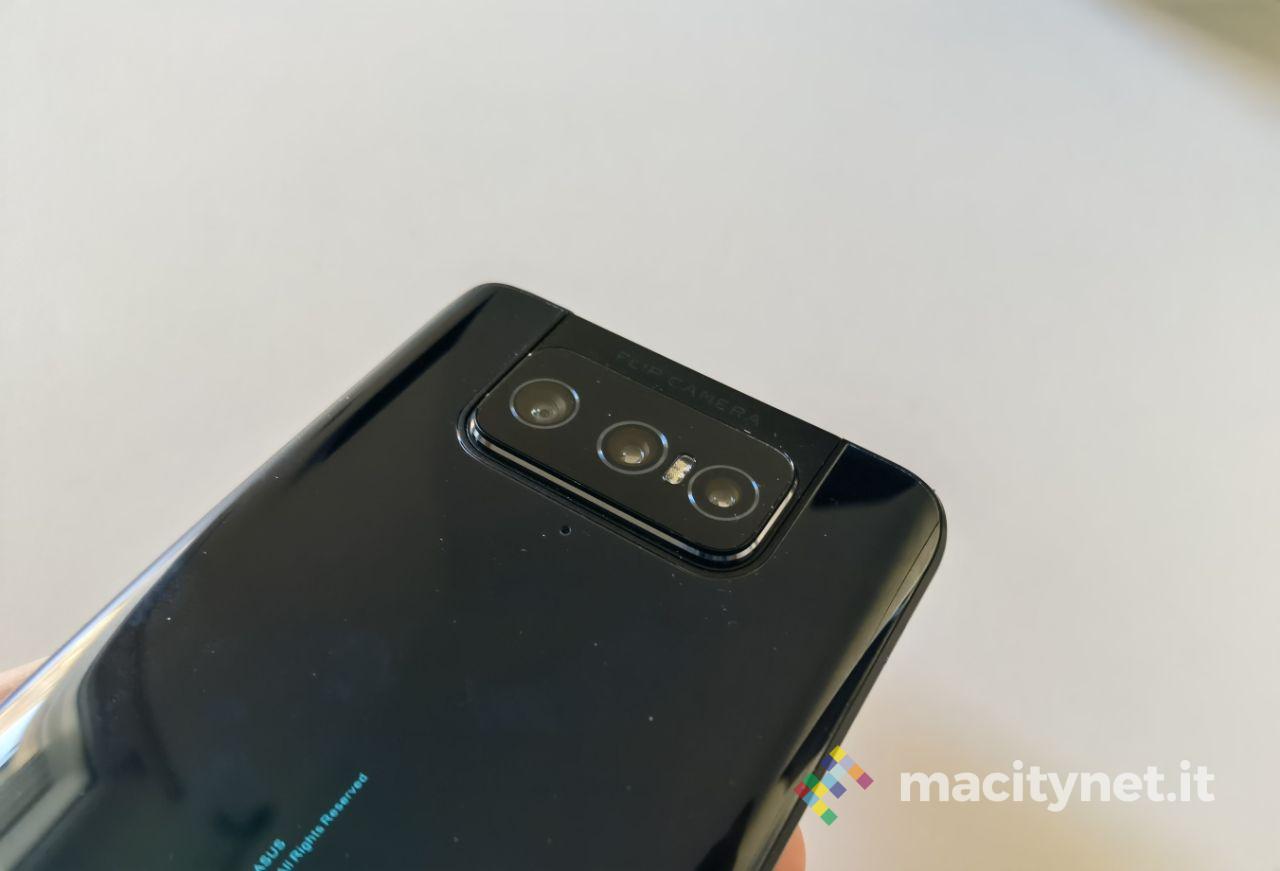
In practical terms, these features translate into great photos with lots of light. In these cases the resulting images are very bright and with a high contrast. In optimal light conditions Zenfone 7 Pro captures many details, which of course are lost to make room for a slight background noise, as the light conditions deteriorate. Furthermore, as the lights deteriorate, the colors in the photos also deteriorate, which are distorted, no longer being accurate.
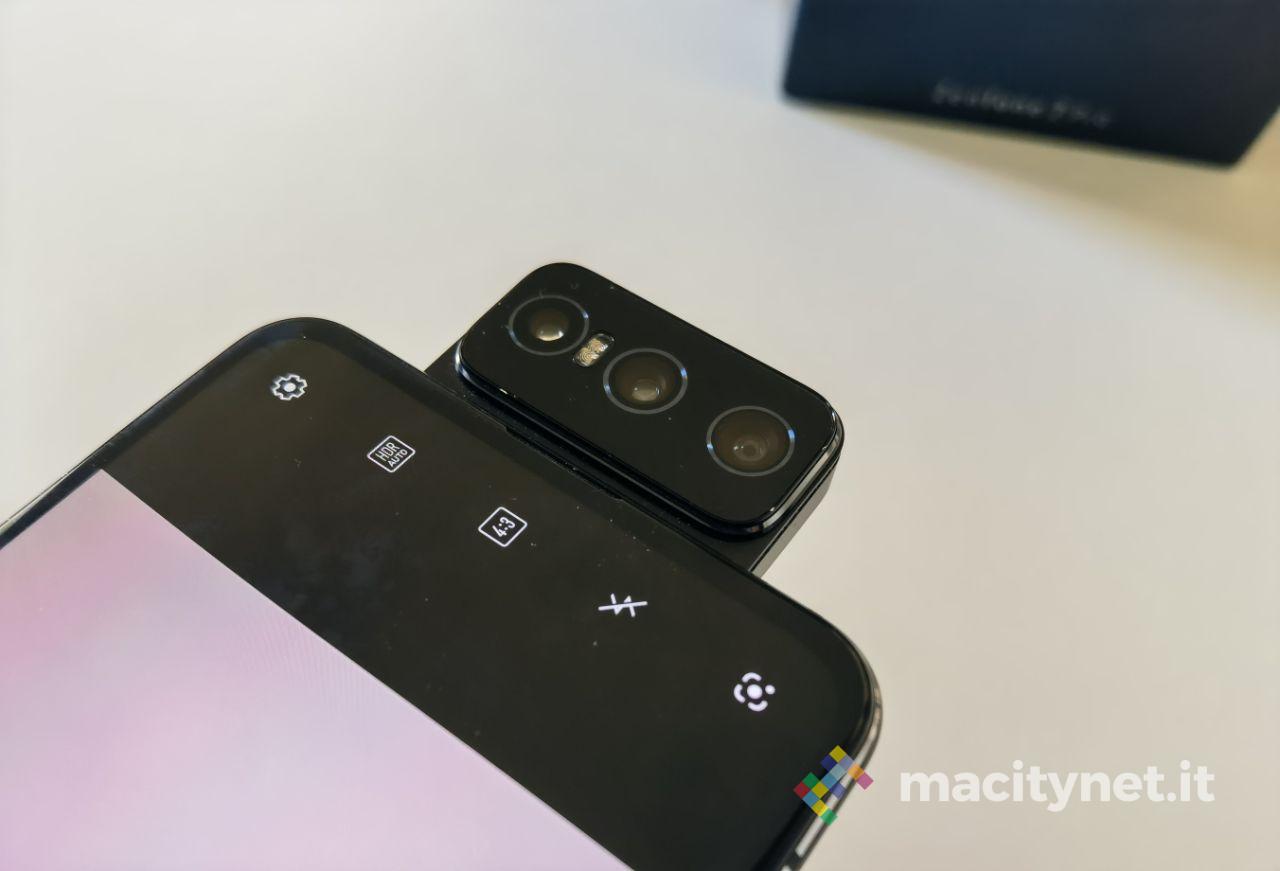
The telephoto camera reduces exposure, color, contrast, and dynamic range, which causes color loss in some circumstances. Good, however, the night mode. In reasonable conditions, such as a lighted street, but also indoors with low artificial lights, the phone captures highly detailed photos with the main camera. Again, shooting with the ultra-wide camera loses detail and sharpness.
Below is a gallery of photos taken with the terminal:





















Where the Zenfone 7 Pro shines is in video recording, also due to the ability to record 8K 30 fps and 4K 120 fps images. The colors are a bit saturated. HDR works really well, both in bright sunlight and under artificial lighting.
The UHD 4K slow motion at 120 fps is excellent, very sharp and fluid, as is the tracking: thanks to the rotating camera, the terminal automatically follows the subject in focus.
Autonomy
Asus has chosen not to include wireless charging, probably not to further aggravate weight and thickness. It does not enjoy a particular sprint recharge, even if the 30 W support ensures a recharge from 0 to 100 in about an hour and a half.
Much of the weight of the smartphone, although not all, is due to the huge 5,000 mAh battery: the number is not surprising, yet the autonomy is above the average offered by competitors, allowing with intense use to reach an average of one day and means of use
Conclusions
Asus Zenfone 7 costs 799 euros, which is also heavy in price. Certainly it is justified by the technical characteristics and the overall quality, as well as by a camera system that will certainly weigh on production costs. Overall, Zenfone 7 Pro is an excellent terminal, lightning fast in everyday use, but which takes into account its size, and its weight. Excellent battery life, as well as the video recording department: a smartphone to certainly recommend to all vloggers who are reading.
PRO
Versus
Retail price
It costs € 799 including VAT in the 7 PRO 256 GBGB RAM version. Available on Amazon, you can buy it at this address.





